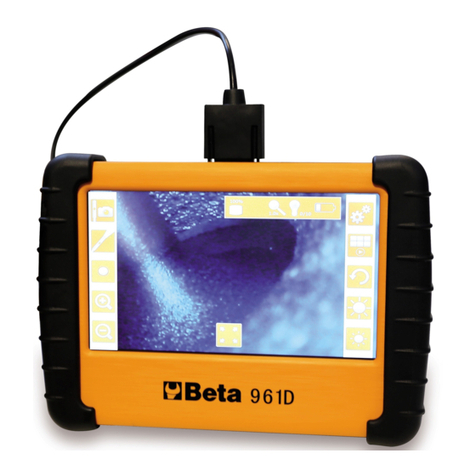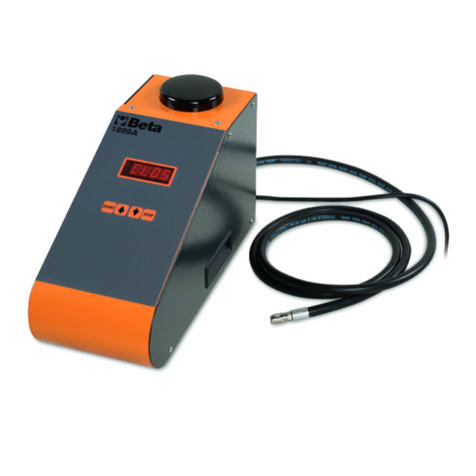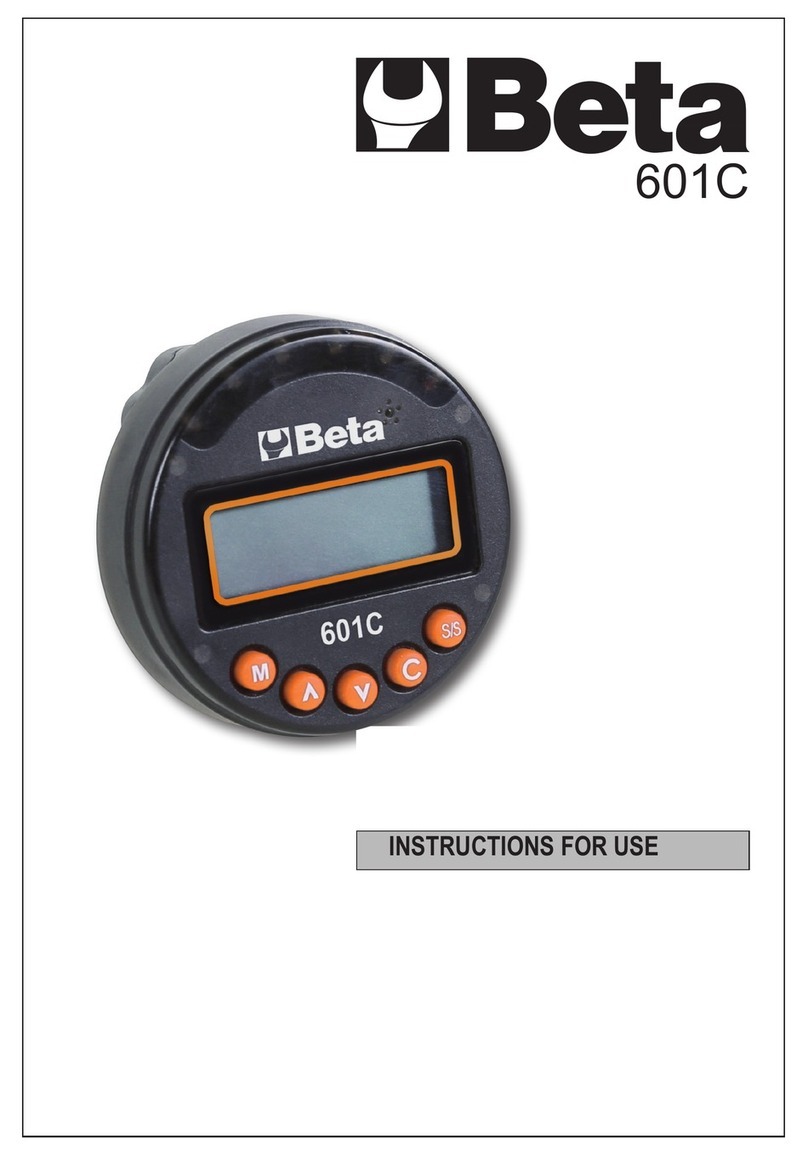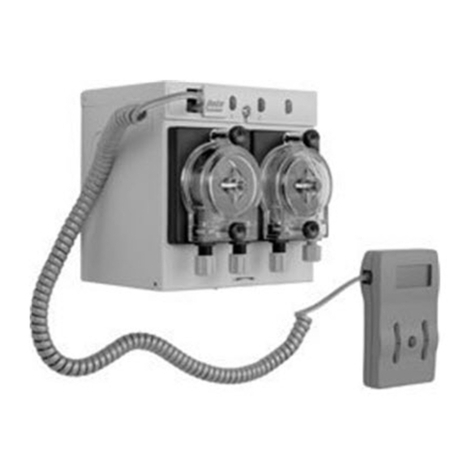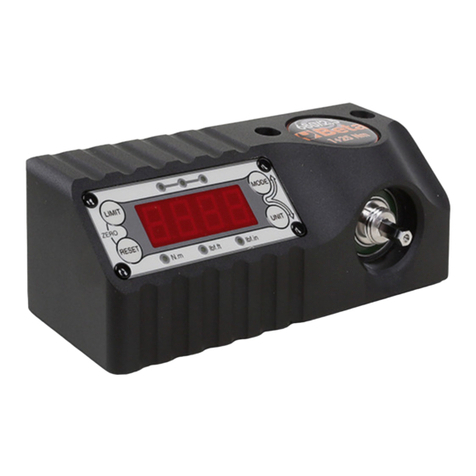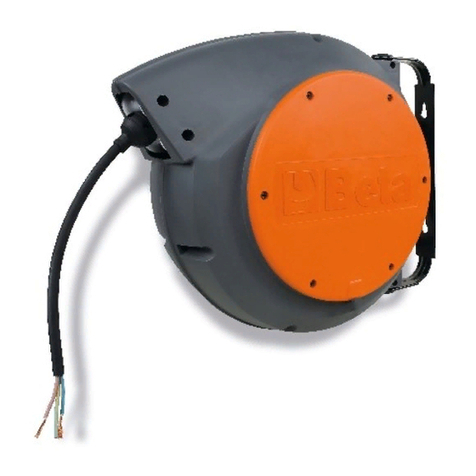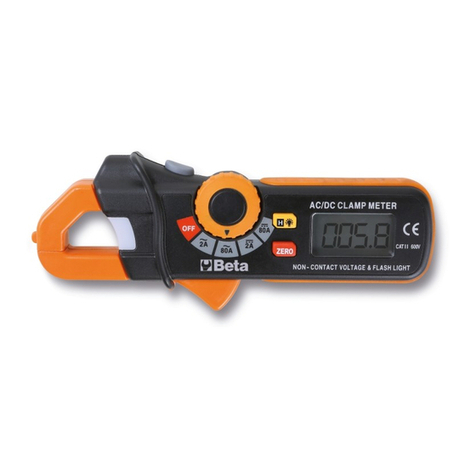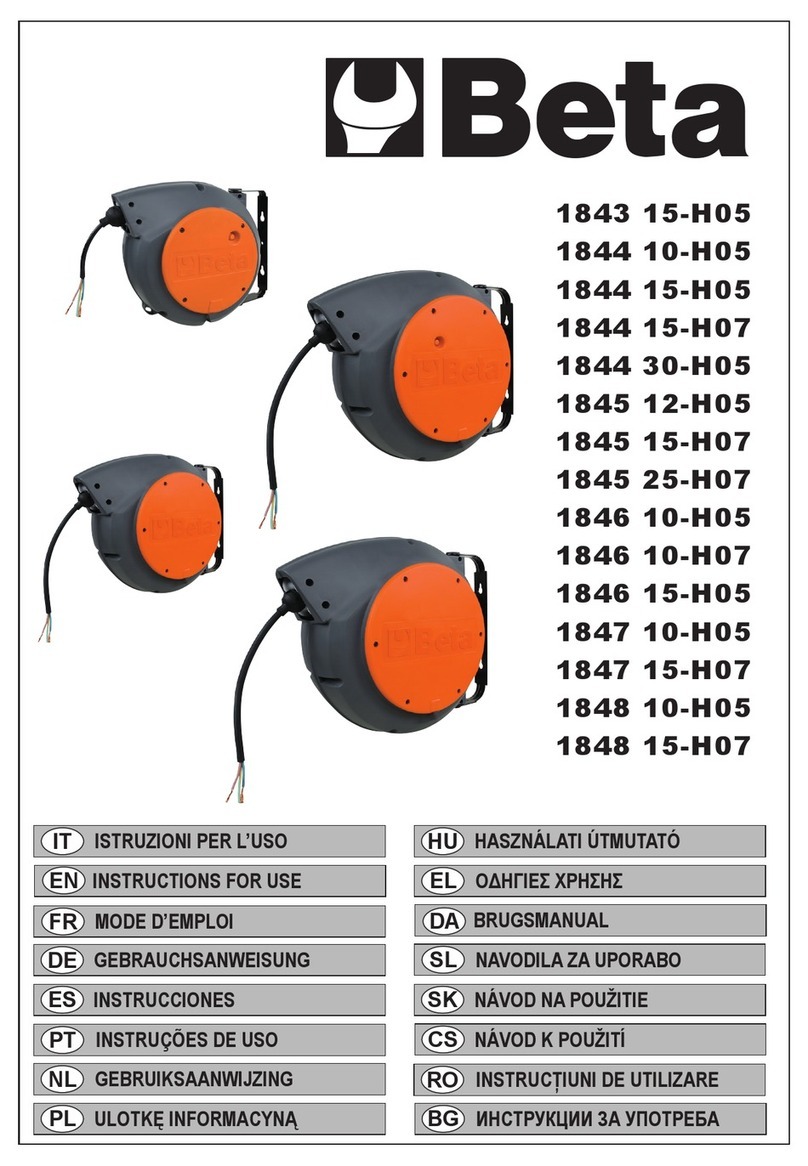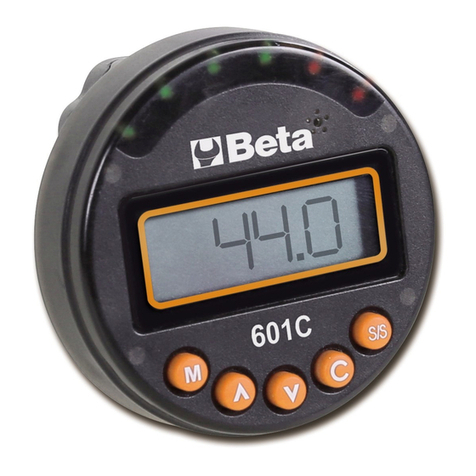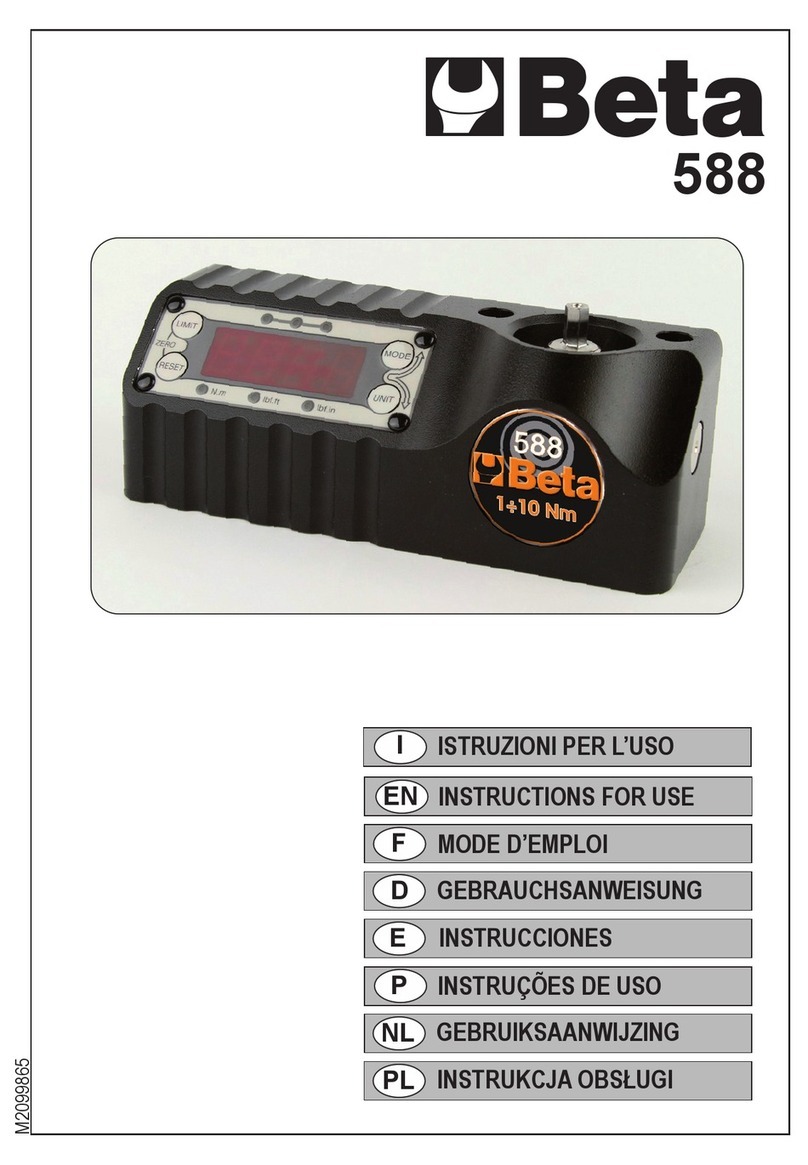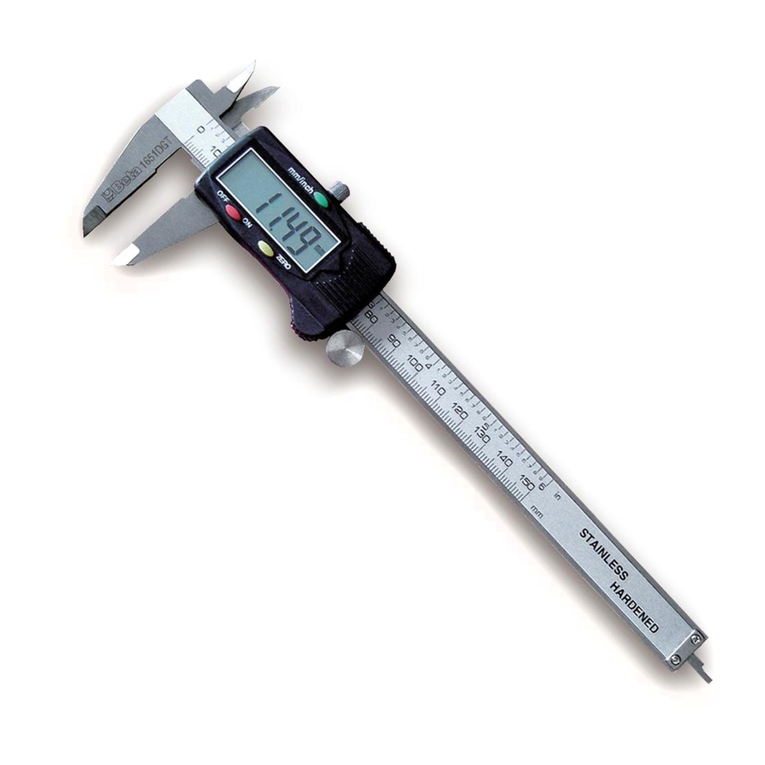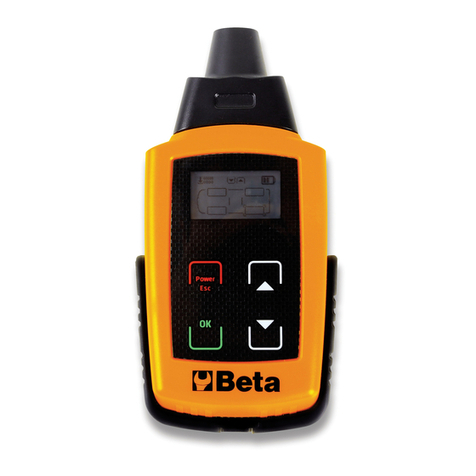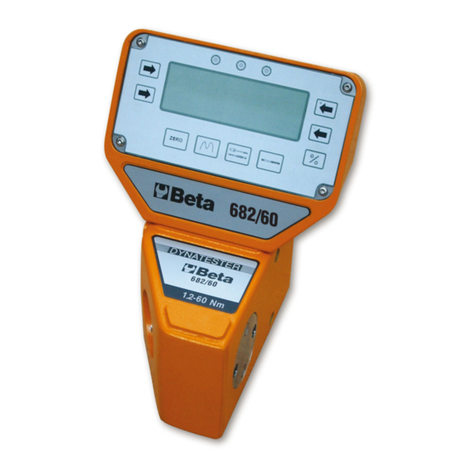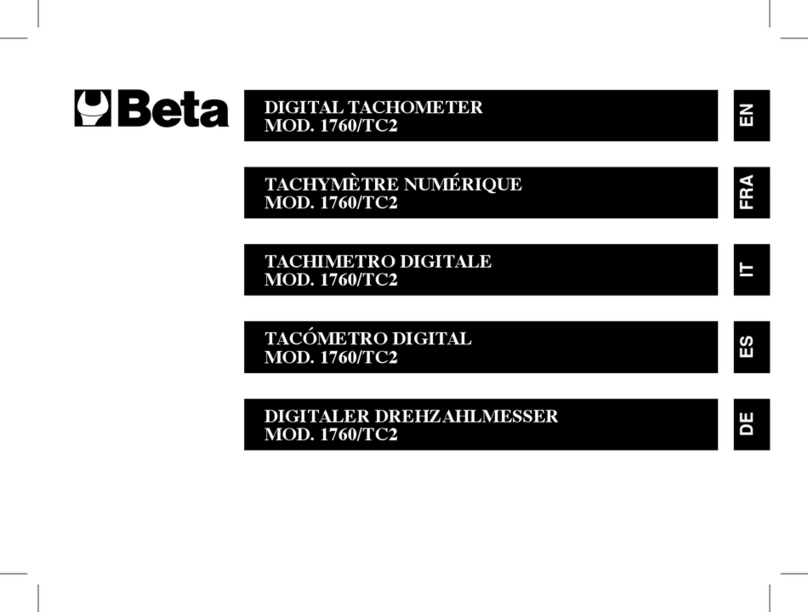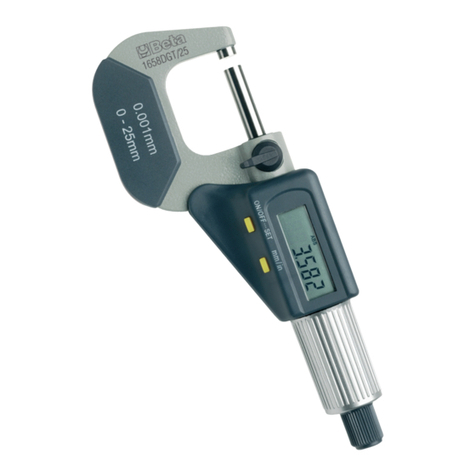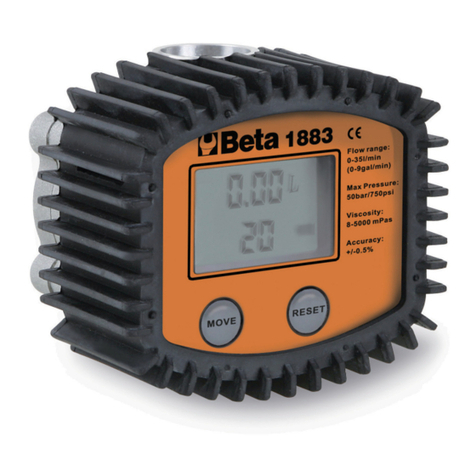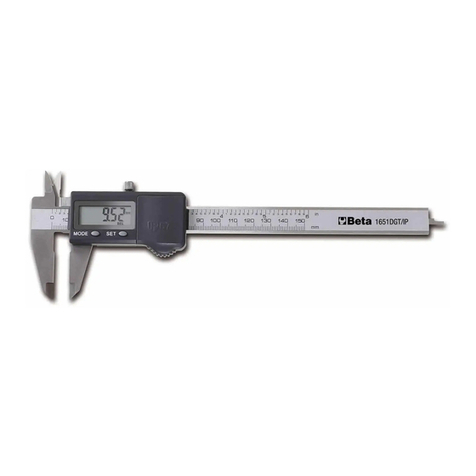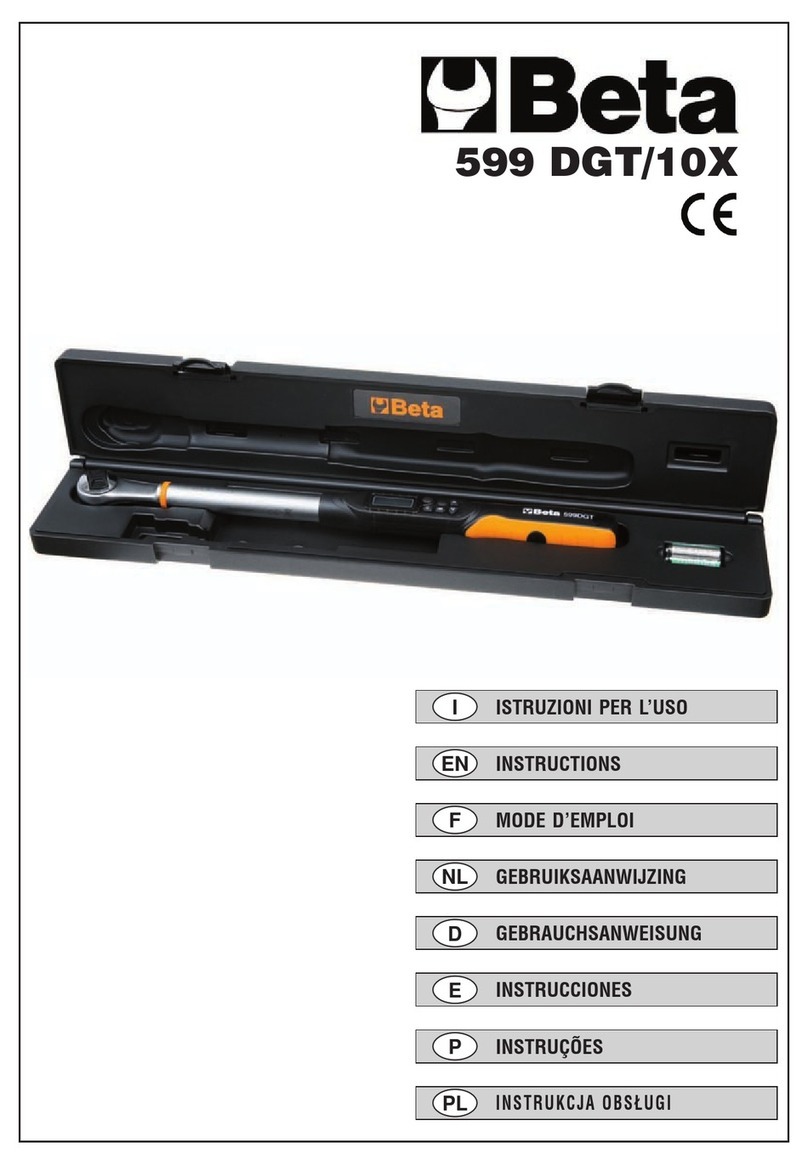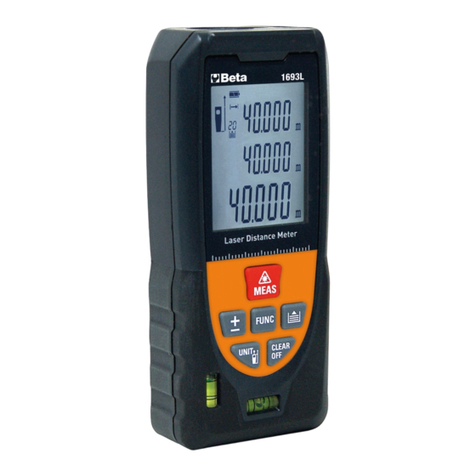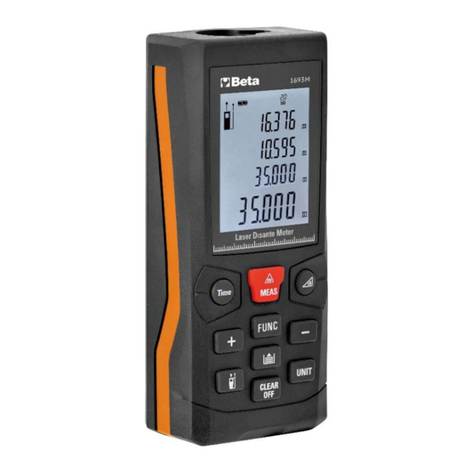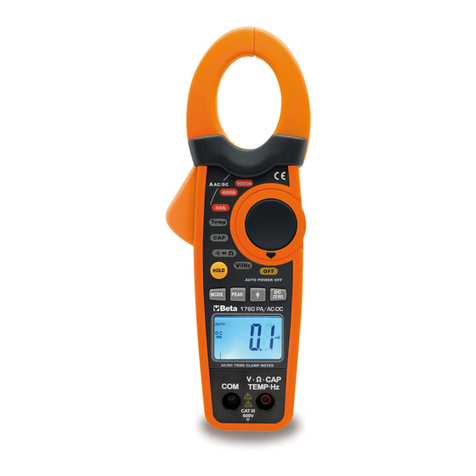
• Guardando nell'oculare allineare
la separazione zona bianca (A),
azzurra (B) in corrispondenza
della linea indicante lo zero (C),
agendo con il giravite in dotazione
sulla vite di regolazione
•CALIBRAZIONE
• Sollevando il coperchio vetrino posizionare almeno 3 gocce di acqua
distillata sul vetrino del prisma. Chiudere il coperchio vetrino facendo
attenzione a non creare bolle d'aria.
• La quantità di liquido sul vetrino deve essere sufficiente a coprirne
tutta la superficie, sia durante i test sia durante la calibrazione.
• Attendere 30 secondi quindi orientare lo strumento con il prisma
verso una fonte di luce, regolando la messa a fuoco
•
B
•
C
•
A
Il punto di congelamento dei liquidi di
raffreddamento sia Propylene sia Ethylene
• Sollevare il coperchio vetrino e mettere due o tre gocce del liquido
che si desidera testare sul vetrino e abbassare il coperchio. (1 )
• La quantità di liquido sul vetrino, deve essere sufficiente a coprirne
tutta la superficie, sia durante i test sia durante la calibrazione (2 )
Per la calibrazione
usare solo acqua
distillata
ATTENZIONE: la vite di regola-
zione è protetta da un cappuccio in
plastica che deve essere riposiziona-
to dopo la calibrazione.
➦
➥
Durante la calibrazione la temperatura
ambientale non deve variare, se vi
sono escursioni termiche maggiori di
2,5°C l'operazione deve essere
ripetuta.Le misurazioni vengono
compensate automaticamente in
funzione delle temperature
!
•IMPIEGO
Con il rifrattometro è possibile verificare:
La carica dell'accumulatore
• Attendere 30 secondi quindi orientare lo strumento con il prisma
verso una fonte di luce, regolando la messa a fuoco (3 )
• Guardando nell'oculare leggere il valore relativo alla scala graduata,
in base al tipo di liquido testato
Il punto di congelamento dei liquidi di
raffreddamento sia Propylene sia Ethylene
La carica dell'accumulatore
➦
➥
•CURA, MANUTENZIONE E AVVERTENZE
Leggere attentamente le istruzioni prima di operare con il rifrattometro.
• Lavare più volte con acqua la pompetta
contagocce.
• Non immergere lo strumento in acqua e
non esporlo a getti e spruzzi d'acqua.
Nel caso in cui si venga a formare della
condensa all'interno del vetrino del
prisma, contattare il proprio rivenditore di fiducia.
• Non manomettere o smontare
lo strumento.
Ž
Ž
• Evitare che riceva colpi
Non usare sostanze corrosive o abrasive a contatto del rifrattometro
perchè possono danneggiare il vetrino del prisma.
Non disperdere i liquidi nell'ambiente durante l'esecuzione delle
prove..Evitare il contatto del liquido da testare con le parti del corpo.
Beta Utensili S.p.A. non è responsabile dei danni a cose e persone
causati dall'uso errato dello strumento. Beta Utensili S.p.A. si riserva la
facoltà di apportare modifiche e miglioramenti.
!
• Dopo ogni uso pulire il vetrino
del prisma con un panno morbido
inumidito e asciugarlo.
2
!
!
3
1
!
!
!
!
ANALIZZATORE OTTICO PER LIQUIDI RAFFREDDAMENTO, BATTERIE
I
• Patrząc w okular należy
ustawić linię dzielącą biały
obszar (A) od niebieskiego
(B) w punkcie
”0” (°C) podziałki obracając
śrubę regulacyjną za pomocą
wkrętaka będącego na wypo-
sażeniu.
•KKAALLIIBBRRAACCJJAA
•Odchylić pokrywę pryzmatu i umieścić co najmniej 3 krople wody
destylowanej na jego powierzchni. Zamknąć pokrywę upewniając się,
że w płynie nie ma żadnych pęcherzyków powietrza.
• Ilość płynu na pryzmacie musi być wystarczająca aby pokryć całą
jego powierzchnię, zarówno podczas pomiarów jak i podczas kalibracji.
• Po odczekaniu 30 sekund należy skierować przyrząd
pryzmatem w stronę źródła światła regulując ostrość.
•
B
•
C
•
A
PPuunnkkttzzaammaarrzzaanniiaacciieecczzyycchhłłooddzząąccyycchhnnaabbaazziiee
gglliikkoolluupprrooppyylleennoowweeggooiigglliikkoolluueettyylleennoowweeggoo,,
• Odchylić pokrywę pryzmatu i umieścić dwie do trzech kropli
badanego płynu na jego powierzchni. Zamknąć pokrywę. ( 11)
• Ilość płynu na pryzmacie musi być wystarczająca aby pokryć całą jego
powierzchnię, zarówno podczas pomiarów jak i podczas kalibracji. ( 22)
WWrraazziieeppoottrrzzeebbyykkaalliibbrraaccjjii
nnaalleeżżyyuużżyywwaaććwwyyłłąącczznniiee
wwooddyyddeessttyylloowwaanneejj
UUWWAAGGAA!!ŚŚrruubbaarreegguullaaccyyjjnnaa
zzaabbeezzppiieecczzoonnaajjeessttkkaappttuurrkkiieemmzz
ttwwoorrzzyywwaakkttóórryymmuussiibbyyććzzaakkłłaaddaannyy
zzppoowwrrootteemmppoozzaakkoońńcczzeenniiuurreegguullaaccjjii..
➦
➥
Jeżeli nastąpi zmiana temperatury
otoczenia o więcej niż 2,5°C w
stosunku do temperatury, w której
była przeprowadzana kalibracja to
należy tę operację powtórzyć.
Pomiary podlegają automatycznej
korekcji temperaturowej.
!
•SSPPOOSSÓÓBBUUŻŻYYCCIIAA
Refraktometr pozwala na wykonanie następujących pomiarów:
SSttooppiieeńńnnaałłaaddoowwaanniiaaaakkuummuullaattoorraa..
• Po odczekaniu 30 sekund należy skierować przyrząd
pryzmatem w stronę źródła światła regulując ostrość. ( 33)
• Patrząc w okular należy odczytać wartość wskazywaną przez
linię dzielącą biały obszar (A) od niebieskiego (B) na odpowiedniej
skali zależnie od rodzaju badanego płynu.
PPuunnkkttzzaammaarrzzaanniiaacciieecczzyycchhłłooddzząąccyycchhnnaabbaazziiee
gglliikkoolluupprrooppyylleennoowweeggooiigglliikkoolluueettyylleennoowweeggoo,,
SSttooppiieeńńnnaałłaaddoowwaanniiaaaakkuummuullaattoorraa..
➦
➥
•CCZZYYSSZZCCZZEENNIIEE,,KKOONNSSEERRWWAACCJJAAIIWWSSKKAAZZÓÓWWKKII
Przed użyciem refraktometru należy uważnie przeczytać instrukcję.
• Dokładnie wymyć pipetę wodą.
• Nie wolno zanurzać przyrządu w wodzie
ani opryskiwać go wodą. Jeżeli pod szybą
ochronną pryzmatu pojawią się krople cieczy
należy skontaktować się ze sprzedawcą.
Nie wolno dokonywać przeróbek ani
rozbierać przyrządu.
• Nie wolno dokonywać przeró-
bek ani rozbierać przyrządu.
Ž
Ž
•
Należy chronić przyrząd
przed uderzeniami.
Nie wolno dopuszczać do kontaktu substancji o właściwościach
ściernych z refraktometrem, gdyż może to prowadzić do
uszkodzenia szyby ochronnej pryzmatu.
Nie należy zanieczyszczać środowiska badanymi płynami podczas
pomiarów Należy unikać kontaktu ciała z badanymi płynami..
BBeettaaUUtteennssiilliiSS..pp..AA..nniieebbiieerrzzeeooddppoowwiieeddzziiaallnnoośścciizzaażżaaddnneeuusszzkkooddzzeenniiaa
pprrzzeeddmmiioottóówwiioobbrraażżeenniiaaoossóóbbwwyywwoołłaanneenniieewwłłaaśścciiwwyymmuużżyycciieemmpprrzzyyrrzząądduu..
BBeettaaUUtteennssiilliiSS..pp..AA..zzaassttrrzzeeggaassoobbiieepprraawwoowwpprroowwaaddzzaanniiaazzmmiiaanniiuulleeppsszzeeńń..
!
• Po użyciu należy wyczyścić
powierzchnię pryzmatu miękką
wilgotną szmatką i następnie wysuszyć.
2
!
!
3
1
!
!
!
!
PRZYRZĄD OPTYCZNY DO POMIARU PARAMETRÓW CIECZY CHŁODZĄCEJ I ELEKTROLITU
PL












